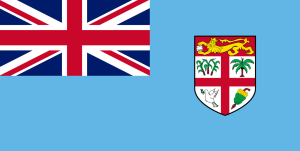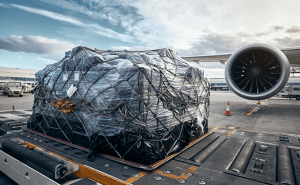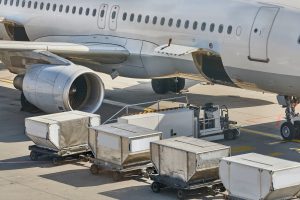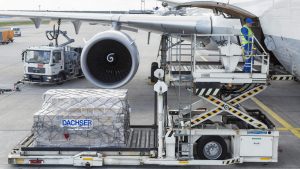AIR FREIGHT FIJI
 Fiji Air Cargo Specialists
Fiji Air Cargo Specialists
35 Years Experience, All Day, Every day, 24/7
One Of Australia’s Most Experienced Air Freight Companies

View Larger Map | Get Directions
CargoMaster Air Freight Services: Saving Time and Money for Fiji
 Fiji, officially known as the Republic of Fiji, is an island nation located in Melanesia within Oceania, situated in the South Pacific Ocean. CargoMaster, a seasoned expert in international air freight services, extends its comprehensive offerings to Fiji, ensuring efficient and reliable cargo transportation to and from this island nation.
Fiji, officially known as the Republic of Fiji, is an island nation located in Melanesia within Oceania, situated in the South Pacific Ocean. CargoMaster, a seasoned expert in international air freight services, extends its comprehensive offerings to Fiji, ensuring efficient and reliable cargo transportation to and from this island nation.
Positioned approximately 1,100 nautical miles (2,000 km; 1,300 mi) north-northeast of New Zealand, Fiji encompasses an archipelago of over 330 islands, with about 110 inhabited permanently. CargoMaster’s air freight services to Fiji cover a wide array of cargo types, including heavy shipments that can be efficiently moved to almost anywhere on the Pacific Islands that possess suitable runways.
 The island group’s diverse geography, including the pivotal islands of Viti Levu and Vanua Levu, is characterszed by mountains and lush tropical forests. CargoMaster’s specialised air freight services cater to these unique terrains, ensuring the safe and timely delivery of cargo, whether it’s heavy machinery, equipment, or other large shipments. The company’s extensive experience in handling international air freight guarantees that cargo is in capable hands.
The island group’s diverse geography, including the pivotal islands of Viti Levu and Vanua Levu, is characterszed by mountains and lush tropical forests. CargoMaster’s specialised air freight services cater to these unique terrains, ensuring the safe and timely delivery of cargo, whether it’s heavy machinery, equipment, or other large shipments. The company’s extensive experience in handling international air freight guarantees that cargo is in capable hands.
 Fiji’s strategic location in the South Pacific makes it a pivotal point for cargo transportation. CargoMaster’s air freight services to Fiji include a range of options, from same-day and overnight air freight solutions to door-to-door or airport-to-airport deliveries. The company’s flexibility shines through its ability to arrange collection of air freight, even on weekends, ensuring seamless logistics for clients.
Fiji’s strategic location in the South Pacific makes it a pivotal point for cargo transportation. CargoMaster’s air freight services to Fiji include a range of options, from same-day and overnight air freight solutions to door-to-door or airport-to-airport deliveries. The company’s flexibility shines through its ability to arrange collection of air freight, even on weekends, ensuring seamless logistics for clients.
 CargoMaster’s commitment to customer satisfaction is evident in its tailored solutions for various cargo sizes. For larger and bulkier shipments exceeding 100kg, CargoMaster goes the extra mile by arranging upliftment on nightly freighter aircraft, ensuring priority and swift delivery. This is particularly beneficial for businesses requiring urgent transportation of goods.
CargoMaster’s commitment to customer satisfaction is evident in its tailored solutions for various cargo sizes. For larger and bulkier shipments exceeding 100kg, CargoMaster goes the extra mile by arranging upliftment on nightly freighter aircraft, ensuring priority and swift delivery. This is particularly beneficial for businesses requiring urgent transportation of goods.
 As Fiji grapples with challenges posed by its unique climate and geographic vulnerability, CargoMaster’s air freight services play a vital role in contributing to the nation’s resilience and development. With expertise in handling various types of cargo, including heavy and specialised shipments, CargoMaster actively supports Fiji’s efforts to address climate change impacts and transition toward sustainable practices.
As Fiji grapples with challenges posed by its unique climate and geographic vulnerability, CargoMaster’s air freight services play a vital role in contributing to the nation’s resilience and development. With expertise in handling various types of cargo, including heavy and specialised shipments, CargoMaster actively supports Fiji’s efforts to address climate change impacts and transition toward sustainable practices.
 CargoMaster’s involvement in air freight services to Fiji extends beyond its commitment to efficient logistics. By offering a broad range of specialist air freight services, the company contributes to Fiji’s economic dynamics. Whether it’s facilitating international trade, supporting the tourism sector, or assisting industries with their cargo transportation needs, CargoMaster plays a pivotal role in Fiji’s growth and connectivity.
CargoMaster’s involvement in air freight services to Fiji extends beyond its commitment to efficient logistics. By offering a broad range of specialist air freight services, the company contributes to Fiji’s economic dynamics. Whether it’s facilitating international trade, supporting the tourism sector, or assisting industries with their cargo transportation needs, CargoMaster plays a pivotal role in Fiji’s growth and connectivity.
 With over 30 years of experience in international air freight, CargoMaster has established itself as a reliable partner for businesses and individuals seeking effective cargo transportation solutions. From handling heavy air freight to providing priority services, CargoMaster’s comprehensive expertise ensures that cargo to and from Fiji is managed with utmost professionalism and care.
With over 30 years of experience in international air freight, CargoMaster has established itself as a reliable partner for businesses and individuals seeking effective cargo transportation solutions. From handling heavy air freight to providing priority services, CargoMaster’s comprehensive expertise ensures that cargo to and from Fiji is managed with utmost professionalism and care.
Types of Air Freight Services Available
Air Freight Charter: Experience the excellence of CargoMaster’s air freight charter services, meticulously crafted to cater to urgent demands for destinations across Fiji equipped with runways. Our air freight charter offerings are impeccably tailored to suit diverse requirements, encompassing the secure conveyance of high-value cargo, time-critical shipments, oversized and unwieldy items necessitating specialised handling, fragile goods demanding extra care, and deliveries with imminent deadlines. Operating an extensive array of aircraft, we span the entire nation, enabling us to provide essential provisions to regions in Fiji affected by natural calamities. Collaborating with a wide spectrum of entities in the vicinity, from local governments to businesses and private organisations, we ensure the utmost professionalism and diligence in managing your cargo.
Same Day Air Freight: Rapid deliveries become a reality with our Same Day Air Freight services! At CargoMaster, we comprehend the paramount importance of swift conveyance, and our same-day air freight solutions are meticulously designed to meet your urgent needs across Fiji. Utilising passenger aircraft for smaller items, frequently serving as carriers for same-day air freight, we also facilitate the transportation of larger items, which may be subject to specific weight and size constraints. For locations sans airports or runways, we employ specialised road vehicles to ensure seamless transit. Typically, items slated for same-day air freight should not exceed 50 kg in weight. For dependable and efficient same-day air freight services spanning Fiji, reach out to CargoMaster today.
Overnight Air Freight: Embrace the advantages of overnight air freight services, connecting you seamlessly to nearly every corner of Fiji. Capitalising on our expansive freighter network, CargoMaster adeptly handles larger and heavier cargo shipments. Specific routes, like those from Sydney to Fiji, benefit from our deployment of wide body aircraft for overnight air freight. To ensure prompt delivery, we suggest depositing or retrieving your goods by 17:00 hours in major cities. Deliveries are typically accomplished by 11:00 hours the ensuing morning. Instill your trust in CargoMaster to expertly manage all your overnight air freight necessities, characterised by professionalism and efficiency. Traverse the realm of seamless cargo transportation with CargoMaster.
Embark on the swiftness and efficiency of CargoMaster’s air freight services. Dial 1300 767 136 to embrace our time-efficient solutions and ensure the smooth transit of your invaluable cargo.
Cost Of Air Freight
Understanding Volumetric Weight Calculation for Air Freight
In air freight, charges are based on the actual weight of the goods or the volumetric weight, whichever is greater. This means that even if a ton of feathers weighs the same as a ton of bricks, the feathers would occupy more space in the cargo hold and be charged based on their volumetric weight. Calculating the volumetric weight of your shipment is simple:
Volumetric Weight Formula: Length x Width x Height x 200
By applying the above formula, you can determine the volumetric weight of your cargo. The charges will be calculated based on whichever weight is greater—either the volumetric weight or the actual weight of the goods.
Preparing Air Freight
Ensuring Smooth and Secure Air Freight with CargoMaster
Properly preparing your air freight before submitting it for transportation is vital to guarantee a seamless and secure journey with CargoMaster. To facilitate efficient handling and protect your cargo from damage, it is crucial to have a clear understanding of the type of products you are shipping. Keep the following guidelines in mind to achieve optimal efficiency and maintain the integrity of your air cargo:
Understanding Air Freight Hazards
- Avoid inadequate packaging that may result in shifting and punctures.
- Insufficient packaging leaves your cargo vulnerable to punctures and other forms of damage.
- Protect your contents from compression forces generated during stacking, shocks, vibrations, or tie-down procedures.
- Proper packaging must withstand drops and impacts encountered during handling operations.
Recommended Packaging Materials for Air Freight Shipments
- Corrugated Fiberboard Boxes
- Utilise robust boxes to prevent compression near the edges.
- Take into account the potential strength degradation over time, particularly in high-humidity environments.
- Consider using single-use packages, as they may not be durable enough for multiple trips.
Wood Packaging for Air Freight
- Enhance strength by incorporating interlocking corners and diagonal braces.
- Avoid placing fasteners in the end grain of wood to maintain resistance.
- Restrict knots to a maximum of 30% of the surface area and refrain from positioning fasteners within knots.
Air Freight Pallets
- Select pallets that can accommodate shipments without overhang.
- Avoid using damaged pallets or those with protruding fasteners.
- Ensure that pallets possess a sufficient floor-bearing load capacity.
By adhering to these guidelines and employing proper cushioning techniques, you can ensure the safety and security of your international shipments when utilising CargoMaster’s air freight services.
Questions Callers Ask Us About Air Freight
What term is used to describe items transported via the air?
Items transported through the air are commonly known as air freight or air cargo. This method allows for swift transportation by air and is a specialised service provided by CargoMaster’s air freight solutions. We take immense pride in delivering exceptional air freight services that are tailored to address urgent needs for destinations worldwide, including those in Fiji.
Is air freight a more economical option?
Air freight is generally not as cost-effective as sea freight. Although sea freight often offers substantial cost savings, particularly for heavier shipments, air freight excels in terms of speed and efficiency. At CargoMaster, we understand the balance between cost and urgency, and we offer competitive pricing for our air freight services to ensure prompt delivery of your cargo.
How can I proceed with air freight?
To initiate air freight for your goods, follow these steps using CargoMaster’s air freight services:
Request an Air Freight Quote: Determine the best air transport option based on your specific needs, timeline, and budget.
- Complete Necessary Forms: Fill out the required shipping paperwork.
- Pack Your Cargo: Properly pack your goods for secure transportation.
- Arrange Pickup: Schedule our team to collect your shipment.
- Transportation of Goods: Your cargo will be transported to the airport for loading onto the aircraft.
- Customs Clearance: We manage the essential customs clearance processes to facilitate smooth transit.
Is air freight faster than sea freight?
Indeed, air freight is notably faster than sea freight. CargoMaster’s same-day and overnight air freight services ensure rapid deliveries. While sea freight might take weeks to reach its destination, our air freight services can achieve the same within a day or two, making it the preferred choice for time-sensitive shipments.
What is the cost per kilogram for air freight?
The cost per kilogram for air freight can vary; however, CargoMaster offers competitive rates tailored to your specific requirements. Our pricing structure aims to offer affordability while providing top-quality air freight solutions. Reach out to us to receive a personalised quote for your air freight needs.
What are the disadvantages of air freight?
Despite its efficiency, air freight can have certain downsides. It is often more expensive than other shipping options due to factors like fuel costs and quicker delivery demands. CargoMaster acknowledges the importance of cost-effectiveness and strives to provide competitive prices for our air freight services. Additionally, flight delays, cancellations, and additional taxes or surcharges can occur.
How do you calculate air freight costs?
CargoMaster calculates air freight costs by considering your cargo’s weight and its destination. Our experienced team takes various factors into account to provide precise estimates for freight forwarding costs. By multiplying your cargo’s weight by the applicable fee per kilogram, we determine the shipping cost, ensuring transparency in pricing.
What is the main advantage of air freight?
The primary advantage of air freight lies in its speed and efficiency. CargoMaster’s air freight services excel in delivering the fastest shipping solution for urgent shipments. Our extensive global delivery network guarantees the swift and secure arrival of your cargo at its intended destination. Furthermore, air freight offers real-time cargo tracking for enhanced visibility during transit.
What type of goods are best suited for air transport?
Air freight is most suitable for transporting small yet time-sensitive cargo with high value and low volume. CargoMaster’s air freight services cater to a wide range of needs, ensuring the prompt and secure delivery of your goods. Whether you have delicate cargo requiring special care or shipments that need to reach their destination quickly, our air freight solutions are well-equipped to meet your requirements.
What distinguishes air cargo from air freight?
Although “air cargo” and “air freight” are often used interchangeably, there is a subtle difference between the two terms. Air cargo encompasses any goods transported by air, including passenger luggage. In contrast, air freight specifically refers to cargo transported in dedicated cargo holds of aircraft. CargoMaster specialises in air freight services, ensuring secure and efficient cargo transportation using dedicated cargo planes.
How reliable is air freight?
Air freight is renowned for its reliability due to predictable schedules, lower risk of loss or damage, and advanced tracking and tracing capabilities. CargoMaster ensures that your air freight shipments are handled with the utmost professionalism and efficiency, ensuring timely and secure deliveries to your desired destinations.
Which goods are most suitable for air transport?
Air freight is ideal for transporting urgent items such as radiopharmaceuticals, high-value technological products, and commodities that require rapid transportation. Additionally, perishable goods like fresh seafood, exotic fruits, and cut flowers benefit from air transport’s speed and efficiency. CargoMaster’s air freight services cater to a diverse range of goods, ensuring they reach their destinations promptly and in optimal condition.
How do you calculate the cost of air freight per kilogram?
Calculating the cost of air freight per kilogram involves multiplying your cargo’s weight and size by the applicable fee per kilogram. As air freight specialists, CargoMaster ensures transparent pricing by providing accurate freight forwarding costs based on your goods’ weight, size and destination.
Which Incoterm is best suited for air freight?
Commonly used Incoterms for air freight shipments include EXW (Ex-works), where the buyer assumes responsibility at the seller’s warehouse, and CIP (Carriage and Insurance Paid to), where the seller handles transportation and insurance. CargoMaster’s air freight services align with various Incoterms, ensuring seamless transportation for your cargo.
What qualifies as oversized cargo in air freight?
Cargo is considered oversized in air freight when its dimensions exceed the size of a main deck position on a cargo aircraft. Equipped to handle oversized cargo, CargoMaster provides special charter services and customised solutions to meet unique shipment requirements.
Which mode of freight transportation is the most economical?
Freight transportation costs depend on various factors, but in general, road and rail transportation tend to be the most economical options, while air freight is typically the most expensive. CargoMaster recognises the importance of cost-effectiveness and offers competitive rates for air freight services without compromising quality and efficiency.
When should you opt for air freight?
Air freight is a wise choice when you require quicker delivery times and have smaller shipments. CargoMaster’s air freight services are designed to address these needs, providing reliable and efficient transportation for time-sensitive shipments and ensuring seamless transit for your cargo.
What are the three primary categories of cargo in air freight? The three main categories of air cargo include:
- General Cargo: Standard cargo that doesn’t require specialised handling or temperature control.
- Special Cargo: Items with unique transportation needs, such as valuable or delicate goods.
- Dangerous/Hazardous Cargo: Goods classified as hazardous materials that demand special handling and compliance with safety regulations. CargoMaster’s air freight services are equipped to handle each of these categories safely and efficiently.
Is air freight or sea freight more affordable?
In general, sea freight is more cost-effective than air freight. Recognising this cost difference, CargoMaster provides both sea and air freight solutions to cater to diverse shipping needs. While air freight may involve higher costs due to increased fuel expenses and faster delivery requirements, our team ensures competitive pricing for air freight services.
What is the maximum pallet height for air freight?
For air freight, the height of a pallet should generally not exceed 150 cm (60 inches). CargoMaster ensures that your cargo is appropriately packed and adheres to the necessary height requirements for seamless transportation using our air freight services.
How long does air freight usually take?
Transit times for air freight shipping can vary based on factors like distance, shipping mode, route, and season. CargoMaster’s air freight services offer various delivery options, with express services taking as little as 1-3 days, standard air freight usually requiring 5-10 days, and sea shipping taking 20-45 days or more.
What is the primary advantage of air freight?
The main advantage of air freight lies in its speed and efficiency. CargoMaster’s air freight services excel in providing the fastest shipping solution for urgent shipments. Our global delivery network ensures the swift and secure arrival of your cargo at its destination. Additionally, air freight provides real-time cargo tracking for enhanced visibility throughout the transportation process.
What type of goods is air freight best suited for?
Air freight is best suited for transporting small yet time-sensitive cargo with high value and low volume. CargoMaster’s air freight services cater to a wide range of needs, ensuring the prompt and secure delivery of your goods. Whether you have delicate cargo requiring special care or shipments that need to reach their destination quickly, our air freight solutions have you covered.
How dependable is air freight?
Air freight is known for its dependability due to predictable schedules, reduced risk of loss or damage, and advanced tracking and tracing capabilities. CargoMaster ensures that your air freight shipments are handled with the utmost professionalism and efficiency, ensuring timely and secure deliveries to your chosen destinations.
Which types of goods are most suitable for air transport?
Air freight is ideal for transporting urgent items such as radiopharmaceuticals, high-value technological products, and commodities that require rapid transportation. Additionally, perishable goods like fresh seafood, exotic fruits, and cut flowers benefit from air transport’s speed and efficiency. CargoMaster’s air freight services cater to a diverse range of goods, ensuring they reach their destinations promptly and in optimal condition.
Which Incoterm is most suitable for air freight?
Commonly used Incoterms for air freight shipments include EXW (Ex-works), where the buyer assumes responsibility at the seller’s warehouse, and CIP (Carriage and Insurance Paid to), where the seller handles transportation and insurance. CargoMaster’s air freight services align with various Incoterms, ensuring seamless transportation for your cargo.
Additional Information
Air Freight Company Trusted Partners
Qantas Freight, Air New Zealand, Virgin Cargo, CargoMaster, Toll Priority, DHL, FedEx, Star Track, Team Global Express
Addition Information (Click the +/- plus/minus symbols to expand/collapse)
| City | Country | Airport code |
|---|---|---|
| Adelaide | Australia | ADL |
| Brisbane | Australia | BNE |
| Cairns | Australia | CNS |
| Canberra | Australia | CBR |
| Gold Coast | Australia | OOL |
| Hobart | Australia | HBA |
| Melbourne | Australia | MEL |
| Perth | Australia | PER |
| Townsville | Australia | TSV |
| Mackay | Australia | MKY |
| Sydney | Australia | SYD |
| Karratha | Australia | KTA |
| Kununurra | Australia | KNX |
| Broome | Australia | BME |
| Rockhampton | Australia | ROK |
| Kalgoorlie | Australia | KGI |
| Port Hedland | Australia | PHE |
| Darwin | Australia | DRW |
| Alice Springs | Australia | ASP |
| Launceston | Australia | LST |
| Newman | Australia | ZNE |
| Maroochydore | Australia | MCY |
|
IAG CARGO |
|
|
|
ULDs are considered an aircraft part and are the only aircraft parts that can be removed from the aircraft and be returned after being handled by unregulated operators, ULD’s are considered to directly contribute to flight safety.
Types Of Unit Load Devices Used In Australia
AKE Container
Type: AKE CONTAINERATA Code: LD3
Internal Volume: 152 cu. ft. 4.3 mc
Weight Limit: 1,588 kg
Loadable Aircraft Type: 747, 747F, 777, Airbus
 AAU Container
AAU Container
Type: AAU CONTAINER
ATA Code: LD29
Internal Volume: 505 cu. ft. 14.3 mc
Weight Limit: 4,626 kg
Loadable Aircraft Type: 747, 747F
 ALF Container
ALF Container
Type: ALF CONTAINER
ATA Code: LD6
Internal Volume: 310 cu. ft. 8.78 mc
Weight Limit: 3,175 kg
Loadable Aircraft Type: 747, 747F,777, Airbus
 AMA Container
AMA Container
Type: AMA CONTAINER
ATA Code: M1
Internal Volume: 621 cu. ft. 17.58 mc
Weight Limit: 6,804 kg
Loadable Aircraft Type: 747F
 AMF Container
AMF Container
Type: AMF CONTAINER
Internal Volume: 516 cu. ft. 14.6 mc
Weight Limit: 5,035 kg
Loadable Aircraft Type: 747,747F, 777, Airbus
P1P_PAG Pallet
Type: PLA PALLET
Size: Base: 60.4″x 125″, Height: 64″
Weight Limit: 3,175kg
Loadable Aircraft Type: 747, 747F, 777, Airbus
 PEB Container
PEB Container
Type: PEB CONTAINER
Size: Base: 53″ x 88″, Height: 84″
Weight Limit: 1,800kg
(B-HIH -1,300 KG)
Loadable Aircraft Type: 747F
 PLA Pallet
PLA Pallet
Type: PLA PALLET
Size:
Base: 60.4″x 125″
Height: 64″
Weight Limit: 3,175kg
Loadable Aircraft Type: 747, 747F, 777, Airbus
 PMC_PQP_P6P Pallet
PMC_PQP_P6P Pallet
Type: PMC, PQP, P6P PALLET
Size: Base: 96″ x 125″
Weight Limit: 5,035 kg (LD), 6,804 kg (MD)
Loadable Aircraft Type: 747, 747F, 777, Airbus
 RKN Container
RKN Container
Type: RKN CONTAINER
ATA Code: LD3
Internal Volume: 125.41 cu. ft. 3.55 mc
Weight Limit: Weight: 1,588 kg
Loadable Aircraft Type: 747, 747F, 777, Airbus
 VZA_VRA
VZA_VRA
Size: Fitted on PGA 20 ft. Pallet
Max Width for Lower Car: 81″/ 205 cm
Max Centre Height for Lower Car: 59″/ 150 cm
Max Wheel Base: 312 cm
Weight Limit: 2,500 kg(Upper Car)
9,300 kg c(Max Gross Weight of Pallet)
Loadable Aircraft Type: 747F Upper Deck
The international community has established a classification system for easy identification of dangerous goods. These goods fall into nine primary classes, and some classes are further divided to address specific risks. Each class/division has a corresponding label that accurately represents the nature of the hazard. These labels must be attached to the package during transport and remain intact throughout the journey. Take a look at the illustrated examples below to understand how these labels effectively communicate the potential dangers.
Under regulations, labels must be clearly visible on the outside of the package and must stay on the package while in transit.
You can often find labels printed on most inner packages such as:
- aerosol cans
- bottles of bleach
- containers of thinners
- tins of paint
- many other products which are available at supermarkets and hardware stores.
Below are the 9 hazard labels for the 9 classes of dangerous goods.
Class 1 Explosives

This includes items such as:
- explosive substances
- pyrotechnic devices
- ammunition
- fireworks
- detonators.
Class 2 Gases

These can be transported as:
- compressed
- liquefied
- refrigerated liquefied
- gas in solution.
This includes aerosols. Class 2 has 3 divisions:
- Division 2.1 – flammable gases such as:
- butane
- propane
- Division 2.2 – non-flammable, non-toxic gases such as:
- oxygen
- liquid nitrogen
- compressed air
- Division 2.3 – toxic gases such as:
- chlorine
- hydrogen sulphide.
Class 3 Flammable liquids

This includes liquids with a boiling point of 35⁰ C or less, or a flash point of 60⁰ C or less such as:
- petrol
- alcohol
- perfumes
- essential oils
- hand sanitiser
- paints.
Class 4 Flammable solids

These are substances that can spontaneously combust and substances, that when they come into contact with water or emit flammable gases. Class 4 has 3 divisions:
- Division 4.1 – flammable solids such as:
- hexamine solid fuel tablets for camping stoves
- self-reactive substances
- desensitised explosives
- Division 4.2 – substances that can spontaneously combust under normal air transport conditions include:
- camphor
- sulphur
- matches
- Division 4.3 – substances that emit flammable gases when they come into contact with water include:
- sodium
- zinc particles
- activated carbon.
Class 5 Oxidising substances and organic peroxides

These substances are not necessarily combustible on their own but can react dangerously with other substances. Class 5 has 2 divisions:
- Division 5.1 – oxidising substances that may not be necessarily combustible, but they may readily yield oxygen and cause other materials to combust, such as:
- hydrogen peroxide
- ammonium nitrate
- potassium chlorate
- sodium nitrate
- Division 5.2 – organic peroxides are thermally unstable and can emit heat and give off harmful or flammable vapours. They can also be liable to explosive decomposition and react dangerously with other substances. Examples are:
- acetyl acetone peroxide
- benzoyl peroxide
- peracetic acid.
Class 6 Toxic and infectious substances

These substances can cause sickness, injury or death if consumed. Class 6 has 2 divisions:
- Division 6.1 – toxic substances that can cause death, injury or to harm human health if swallowed, inhaled or by skin contact, such as:
- chloroform
- arsenics
- cyanides
- cytotoxic waste
- barium compounds
- pesticides
- Division 6.2 – infectious substances that contain or are expected to contain pathogens that can cause disease in humans or animals, including:
- medical or clinical waste
- patient specimens
- genetically modified organisms
- infectious substances
- infected animals.
Class 7 Radioactive materials

These are substances that emit invisible ionising radiation that can be harmful to humans and animals. It can cause objects such as aircraft and equipment to become contaminated if not packaged and handled correctly, such as:
- uranium
- radioactive ores
- isotypes
- radium
- cesium
- x-ray equipment
- medical equipment or parts.
Class 8 Corrosives

These substances can cause irreversible damage if they come into contact with skin and could destroy other freight, or materially damage containers or aircraft. This includes:
- acids
- corrosive cleaners
- battery fluid
- formaldehyde
- hydrofluoric acid.
Class 9 Miscellaneous

These are substances and articles which, during air transport, present a danger not covered by other classes. There are 2 types of handling labels – 1 for lithium battery shipments, and another for all other miscellaneous dangerous goods. This class includes:
- lithium batteries
- battery powered vehicles
- battery powered equipment
- first aid kids
- environmentally hazardous substances
- dry ice
- magnetised materials
- asbestos.
Handling labels
In addition to hazard labels, trained staff must attach handling labels where needed. Staff must use these 4 handling labels with the appropriate hazard labels:
Cargo aircraft only

This label is used to show that the load cannot be carried on a passenger aircraft.
Cyrogenics

This label is used on liquefied gases, such as the ones in Class 2.
This way up

This label ensures a load is placed the correct way up and can be used for non-dangerous goods.
Magnetised material

This label ensures that the load is kept away from the aircraft compass detector unit while being loaded and unloaded.
Please Note: The below list does not describe all types of hazardous air cargo (it is not exhaustive and all encompassing). General items listed below may be found in baggage and possibly have hazards that are not immediately apparent. There are strict laws in relation to lodging of hazardous air cargo and compliance with hazardous air cargo regulations.
Typical examples of hazardous air cargo
Engines (contain fuel and that are not cleaned, purged and sealed)
Mining equipment
Magnets
Pressurised containers
Passenger baggage (containing flammable gas or liquid lighter refuel. camping stove cylinders
Photographic Supplies
Expeditionary equipment
Vaccines
Solvents, adhesives
Pesticides
Dental apparatus
Machinery parts
Frozen foods (packed in solid dry ice)
Dry Ice
Tool Boxes (compressed gases, aerosols)
Electrical equipment
Diving equipment
Pharmaceuticals
Switches in electrical equipment
Toys (made of cellulose)
Refrigerators (may contain gases or chemicals)
Swimming pool chemicals
Pressurised containers
Engines (contain fuel and that are not cleaned, purged and sealed)
Mining equipment
Diagnostic specimens
Thermometers (containing mercury)
Frozen Embryos
Ammunition
Swimming pool chemicals
Aerosols
Compressed non-flammable gas
Batteries
Breathing Apparatus
Frozen foods (packed in solid dry ice)
Motor Vehicle parts
Chemicals
Sydney Airport – IATA Code – SYD
Melbourne Airport – IATA Code – MEL
Brisbane Airport – IATA Code – BNE
Perth Airport – IATA Code – PER
Adelaide Airport – IATA Code – ADL
Gold Coast Airport – IATA Code – OOL
Cairns Airport – IATA Code – CNS
Canberra Airport – IATA Code – CBR
Hobart Airport – IATA Code – HBA
Darwin Airport – IATA Code – DRW
Townsville Airport – IATA Code – TSW
Newcastle Airport – IATA Code – NTL
Sunshine Coast Airport – IATA Code – MCY
Mackay Airport – IATA Code – MKY
Avalon Airport – IATA Code – AVV
Alice Springs Airport – IATA Code – ASP
Rockhampton Airport – IATA Code – ROK
Ballina Airport – IATA Code – BNK
Ayers Rock Airport – IATA Code – AYQ
Karratha Airport – IATA Code – KTA
Hamilton Island Airport – IATA Code – HTI
Proserpine Airport – IATA Code – PPP
Broome Airport – IATA Code – BME
Coffs Harbour Airport – IATA Code – CFS
Port Hedland Airport – IATA Code – PHE
Newman Airport – IATA Code – ZNE
Kalgoorlie-Boulder Airport – IATA Code – KGI
Albury Airport – IATA Code – ABX
Gladstone Airport – IATA Code – GLT
Mildura Airport – IATA Code – MQL
Port Macquarie Airport – IATA Code – PQQ
Mount Isa Airport – IATA Code – ISA
Dubbo Airport – IATA Code – DBO
Flowers for Mum, gadgets for Dad. Toys at Christmas, no one is sad.
If it were not for air cargo, we would not have Strawberries at Wimbledon, the latest i-fad Stylish new shoes, wow they are rad!
If it were not for air cargo, we would not have the hottest jewelry, the freshest of meat. Even the leather that covers your seat!
If it were not for air cargo, we would not have TVs, radios, music that booms.
Even the speakers that fill our rooms.
If it were not for air cargo, we would not have Salmon from Norway, lamb from the South Tasty chocolates, delicious in the mouth.
If it were not for air cargo, we would not have Sports cars, racehorses, helicopters too Yes, on an airplane that will surprise you.
If it were not for air cargo, we would not have Circuit boards, scanners, crayons and plates Even the rollers that affix to your skates
If it were not for air cargo, we would not have Wines, clothes and diamond rings
Cheeses, books in fact most things
If it were not for air cargo, we would not have Thousands of jobs and millions of lives impacted positively as the economy thrives, make it here, sell it there.
Air cargo people, they really care!
So as you sit comfortably in your aircraft seat, Think of the cargo beneath your feet!
A wide variety of aircraft available for international air cargo.
AIRBUS A330-200
Utilised on domestic routes by Qantas
The A330-200, will uplift approx 14 ton or 61 cubic meters
(subject to weather conditions)
AIRBUS A330-300
Utilised by Qantas on domestic air freight routes
The A330-300, will uplift approx 15 ton or 80 cubic meters
(subject to weather conditions)
AIRBUS A320
Utilised by Qantas on domestic routes
The A320 will uplift 1 ton or approx 3 cubic meters
(subject to weather conditions)
AIRBUS A321
The A321 will uplift 3 ton or 10 cubic meters.
AIRBUS A330-800
The A330-800 will uplift 20 ton or 68 cubic meters.
BAE 146-300 FREIGHTER (Quiet trader)
The BAE 146 (Quiet trader as it is known)
Will uplift approx 10 ton or 80 cubic meters.
Boeing B737-300 Freighter
The 737 freighter will uplift approx 17 ton or 130 cubic meters.
Boeing B737-800
The 737-800 will uplift approx 3.5 ton or 30 cubic meters.
Boeing B767-300 Freighter
The 767 freighter will uplift 56 ton and 320 cubic meters.
Boeing B787-9
The 787-9 will uplift approx 18 ton or 96 cubic meters.
INCOTERMS are standard trade terms most commonly used in international freight contracts for sale of goods. It is essential that you are aware of your terms of trade prior to shipment.
EXW – EX WORKS (… named place of delivery)
The Seller’s only responsibility is to make the goods available at the Seller’s premises. The Buyer bears full costs and risks of moving the goods from there to destination.
FCA – FREE CARRIER (… named place of delivery)
The Seller delivers the goods, cleared for export, to the carrier selected by the Buyer. The Seller loads the goods if the carrier pickup is at the Seller’s premises. From that point, the Buyer bears the costs and risks of moving the goods to destination.
CPT – CARRIAGE PAID TO (… named place of destination)
The Seller pays for moving the goods to destination. From the time the goods are transferred to the first carrier, the Buyer bears the risks of loss or damage.
CIP– CARRIAGE AND INSURANCE PAID TO (… named place of destination)
The Seller pays for moving the goods to destination. From the time the goods are transferred to the first carrier, the Buyer bears the risks of loss or damage. The Seller, however, purchases the cargo insurance.
DAT – DELIVERED AT TERMINAL (… named terminal at port or place of destination)
The Seller delivers when the goods, once unloaded from the arriving means of transport, are placed at the Buyer’s disposal at a named terminal at the named port or place of destination. “Terminal” includes any place, whether covered or not, such as a quay, warehouse, container yard or road, rail or air cargo terminal. The Seller bears all risks involved in bringing the goods to and unloading them at the terminal at the named port or place of destination.
DAP – DELIVERED AT PLACE (… named place of destination)
The Seller delivers when the goods are placed at the Buyer’s disposal on the arriving means of transport ready for unloading at the names place of destination. The Seller bears all risks involved in bringing the goods to the named place.
DDP – DELIVERED DUTY PAID (… named place)
The Seller delivers the goods -cleared for import – to the Buyer at destination. The Seller bears all costs and risks of moving the goods to destination, including the payment of Customs duties and taxes.
MARITIME TERMS
FAS – FREE ALONGSIDE SHIP (… named port of shipment)
The Seller delivers the goods to the origin port. From that point, the Buyer bears all costs and risks of loss or damage.
FOB– FREE ON BOARD (… named port of shipment)
The Seller delivers the goods on board the ship and clears the goods for export. From that point, the Buyer bears all costs and risks of loss or damage.
CFR– COST AND FREIGHT (… named port of destination)
The Seller clears the goods for export and pays the costs of moving the goods to destination. The Buyer bears all risks of loss or damage.
CIF – COST INSURANCE AND FREIGHT (… named port of destination)
The Seller clears the goods for export and pays the costs of moving the goods to the port of destination. The Buyer bears all risks of loss or damage. The Seller, however, purchases the cargo insurance.
 ®
® 
